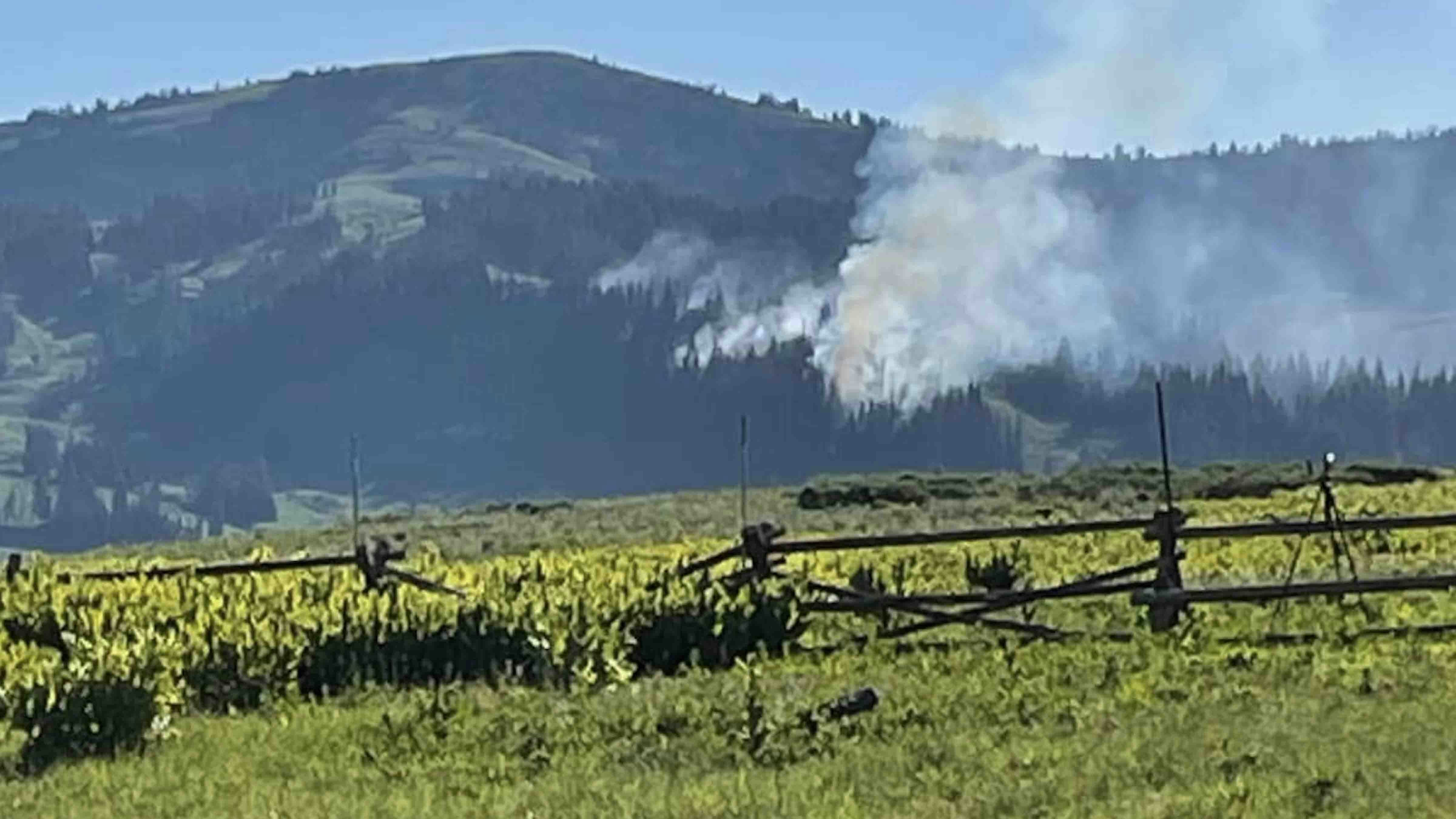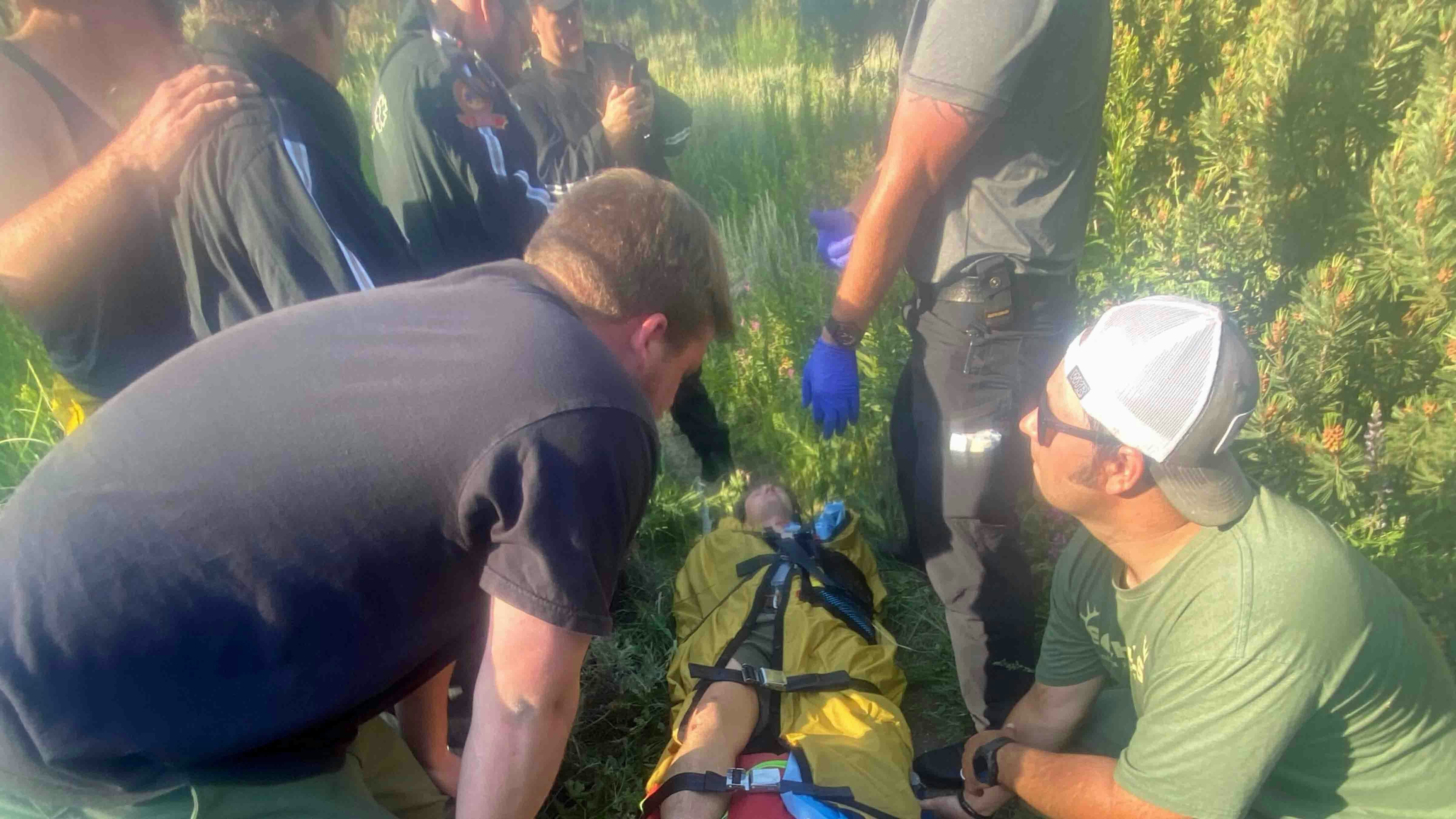Mount St. Helens is acting up again. The U.S. Geological Survey has been monitoring several earthquakes deep underneath the earth where the very active Washington state volcano's magma is churning.
The USGS has detected about 350 earthquakes under Mount St. Helens since Feb. 1. Most of the quakes are originating around 4.6 miles under the volcano's gapping crater, called a caldera, and register as magnitude 1 or lower, too small to be felt at the surface.
Anyone who remembers the spectacular eruption of Mount St. Helens on May 18, 1980, might be alarmed by any detected activity under the volcano and whether it could trigger other seismic activity, including prompting the huge volcano under Yellowstone National Park to perk up.
Experts says that’s not likely, and the shakes under Mount St. Helens shouldn't alarm anyone in Wyoming. They're both active volcanoes but far from being active threats, especially to each other.
But that doesn't stop people for wondering and frequently asking about the potential for Yellowstone to awake from dormancy in relation to other seismic events.
Routine Behavior
Mike Poland, the scientist in charge of the Yellowstone Volcano Observatory, is also an expert on the volcanoes in the Cascade Mountains, including Mount St. Helens. He said the recently detected seismic activity is notable, but toothless. And he gets asked about it.
"These sorts of earthquakes have been associated at this depth with what seismologists have called recharge seismicity," he told Cowboy State Daily. "That suggests a small amount of pressurization. There could be a small amount of magma accumulating at depth, or it could indicate that some gas is being released. It's unclear exactly what the cause is, but it's a very small amount of pressure increase."
Mount St. Helens does this sort of thing all the time, he said. Similar seismic behavior was detected from July to December 2023 and over at least three other periods, usually over several years, between 1980 and 2000.
Poland noted that none of the earthquakes led to an eruption, and there are no other signs that an eruption is imminent. This is the routine behavior of a young and very active volcano.
"We see these things from time to time, and they're not accompanied by other changes," he said. "There's no inflation of the volcano, no ground deformation, no anomalous acid mission. So, at this point, it's just a small amount of seismicity, and it's pretty rare that earthquakes actually trigger volcanic eruptions."

People Wonder
Even if the recent seismic activity doesn't cause any concern among scientists, Poland said the observatory regularly gets concerned calls from the public about a possible eruption of Mount St. Helens.
He also said many callers are worried about what anything happening at Mount St. Helens means for the much larger Yellowstone volcano.
"That's a pretty common question," he said. “But there's no connection between Mount St. Helens and Yellowstone, even looking in the geologic record at those two systems."
Poland described Mount St. Helens as a "much younger and more vigorous" volcano than Yellowstone. It has erupted as many times in the last 50,000 years as all the other volcanoes in the Cascades combined.
"It's the most active volcano in the Cascades by far," he said. "But in terms of the actual systems, Mount St. Helens and Yellowstone are very different in their behavior and scale, both in space and time."
There are dozens of significant differences between the two volcanoes. The much younger Mount St. Helens formed as a single large dome from thousands of years of lava flows and ground uplift, but Yellowstone operates on a much larger, slower scale.
"The Mount St. Helens we see today has only grown about the last 4,000 years," Poland said. "Yellowstone's last eruption was a lava flow eruption 70,000 years ago, but its flows are so humongous they aren't easily recognizable. They look like mountains instead of lava flows. The scale of Yellowstone is just so much bigger than the little dome of Mount St. Helens."
Senior Shaker
Yellowstone is older and "less active" than Mount St. Helens, but is far from defunct. Poland said Yellowstone might have as many earthquakes in a few weeks as Mount St. Helens experiences all year.
"In a big year, Mount St. Helens might have a few hundred earthquakes, while Yellowstone typically has 1,500-2,500 earthquakes per year," he said. "On the whole, it's a little less seismically active than Yellowstone."
Earthquakes at both volcanoes originate from different sources. In addition to underground volcanic activity, the movement of tectonic faults and hydrothermal activity also create seismic events in Yellowstone and Mount St. Helens.
The big difference is scale. Since Yellowstone is significantly larger and spread out over a much wider area, it has more sources for more earthquakes.
Triggering The Young Hothead?
There are 560 miles between Yellowstone National Park and Mount St. Helens. That's a sizeable distance between the two volcanoes, but Yellowstone is one of the largest volcanoes on the planet.
Could an earthquake or eruption of Mount St. Helens trigger an eruption of Yellowstone, and vice versa? Setting aside the rarity of any volcanic eruption starting from an earthquake, Poland said the chances of either volcano triggering the other is next to nil.
"To impact one another, it'd have to be through stress transfer, like how cracks in your car windshield might interact," he said.
Two chips or cracks in a glass windshield might be close enough to become one continuous crack. However, Poland said the distance between Yellowstone and Mount St. Helens would be like worrying how a crack in the front windshield would impact a crack on the rear windshield.
"The crack in your front windshield has nothing to do with the crack in your rear windshield," he said. "Stresses from the cracks don't transfer like that. It's the same thing with earthquakes. They're just too far apart to feel each other."
The Real Risks
Even if there aren't any signs of an imminent eruption of Mount St. Helens, it's still one of the most active volcanoes in North America. The USGS ranked it as one of the highest-risk volcanoes in the lower 48 states, along with its Cascade cousin, Mount Rainier.
Mount St. Helens has erupted twice in the last 50 years. The explosive eruption of 1980, which killed 57 people with a force of 26 megatons of dynamite, was followed by a minor nonexplosive eruption in 2004, resulting in a new lava dome in the volcano's center.
Future eruptions of Mount St. Helens could be even larger than the one observed in 1980. However, there are no indications that this will happen anytime soon.
Meanwhile, Mount Rainier is much quieter than Mount St. Helens and doesn't have a history of explosive eruptions. Poland said the concern about a potential eruption of the volcano overlooking Seattle would be a lahar, a mudflow triggered by volcanic activity.
"The hazard of a Mount Rainier is that it might melt a lot of that snow and ice that's sitting on the volcano, and that could lead to catastrophic flooding down the drain ditches that radiate away from the mountain," he said. "That has happened in the geologically recent past, and these mudflows have the potential to be large enough to impact populated areas."
Yellowstone is low on a volcanologist's threat list. It's been relatively quiet since its last eruption 70,000 years ago, and its last explosive eruption was nearly 600,000 years before that.
Better Than Ever
When Mount St. Helens is ready to blow its top again, there will be a lot more warning than in 1980. Poland cited the recently detected seismic activity as a sign of how much better prepared the USGS will be whenever the next big eruption occurs.
"The lesson from this seismicity at Mount St. Helens is that we're detecting stuff that's really small," he said. "This wouldn't have been possible a few decades ago. The technology wasn't as advanced, and the monitoring and networks were not as complete.
“The fact that we're even able to talk about the sort of seismicity that's happening at Mount St. Helens now is a testament to advances in monitoring and volcanology over the last few decades."
Many of those monitoring techniques and technologies were tested at Yellowstone. While the two volcanoes might be completely different in size and systems, Poland and other volcanologists learn a lot about one by studying the other.
"They definitely can inform one another," he said. "Yellowstone and Mount St. Helens are not analogs for one another by any means. But that doesn't mean that lessons we learn can’t be applied to both, and the techniques used at each volcano can and are used at the other.”
Andrew Rossi can be reached at arossi@cowboystatedaily.com.








